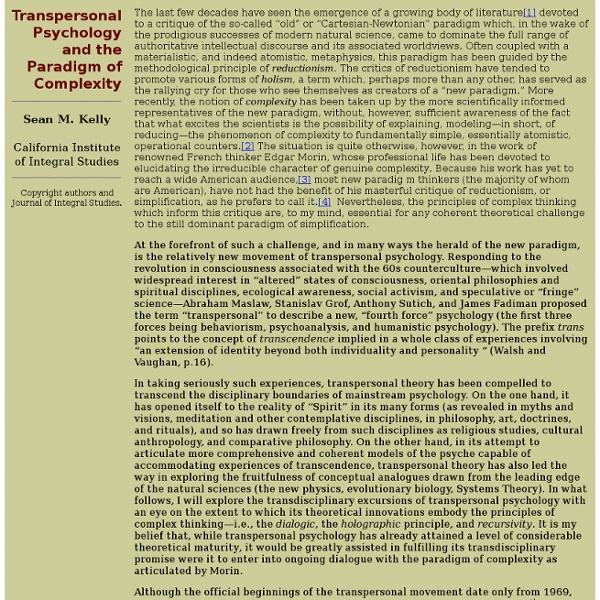The Octarine argument.
Yes, yes - colour corresponds with real properties. But colour itself is not in the external physical world. It's like those cases where a picture from a telescope or a microscope is given colours artificially to help show up the different substances. The colours are not real, but they do help you understand more about what you're seeing. It turns out that all colour is more or less like that -yes, it's helpful, but that doesn't mean it directly reflects the physical reality. After all, we only actually sense three different wavelengths.
Too complex to exist - The Boston Globe
ON . 10, 1996, a single power line in western Oregon brushed a tree and shorted out, triggering a massive cascade of power outages that spread across the western United States. Frantic engineers watched helplessly as the crisis unfolded, leaving nearly 10 million people without electricity. Even after power was restored, they were unable to explain adequately why it had happened, or how they could prevent a similar cascade from happening again - which it did, in the Northeast on Aug. 14, 2003.
9 Mind-Bending Epiphanies That Turned My World Upside-Down
Over the years I’ve learned dozens of little tricks and insights for making life more fulfilling. They’ve added up to a significant improvement in the ease and quality of my day-to-day life. But the major breakthroughs have come from a handful of insights that completely rocked my world and redefined reality forever. The world now seems to be a completely different one than the one I lived in about ten years ago, when I started looking into the mechanics of quality of life. It wasn’t the world (and its people) that changed really, it was how I thought of it.
Möbius strip
A Möbius strip made with a piece of paper and tape. If an ant were to crawl along the length of this strip, it would return to its starting point having traversed the entire length of the strip (on both sides of the original paper) without ever crossing an edge. The Möbius strip or Möbius band (UK /ˈmɜrbiəs/ or US /ˈmoʊbiəs/; German: [ˈmøːbi̯ʊs]), also Mobius or Moebius, is a surface with only one side and only one boundary component. The Möbius strip has the mathematical property of being non-orientable. It can be realized as a ruled surface. It was discovered independently by the German mathematicians August Ferdinand Möbius and Johann Benedict Listing in 1858.[1][2][3]
Slow design
Slow Design is a branch of the Slow Movement, which began with the concept of Slow Food, a term coined in contrast to fast food. As with every branch of the Slow Movement, the overarching goal of Slow Design is to promote well being for individuals, society, and the natural environment. Slow Design seeks a holistic approach to designing that takes into consideration a wide range of material and social factors as well as the short and long term impacts of the design.
Scientific Notation
Scientific Notation (also called Standard Form in Britain) is a special way of writing numbers: It makes it easy to use big and small values. OK, How Does it Work? Example: 700 Why is 700 written as 7 × 102 in Scientific Notation ? so 700 = 7 × 102
User-centered design
The chief difference from other product design philosophies is that user-centered design tries to optimize the product around how users can, want, or need to use the product, rather than forcing the users to change their behavior to accommodate the product. UCD models and approaches[edit] For example, the user-centered design process can help software designers to fulfill the goal of a product engineered for their users. User requirements are considered right from the beginning and included into the whole product cycle. These requirements are noted and refined through investigative methods including: ethnographic study, contextual inquiry, prototype testing, usability testing and other methods. Generative methods may also be used including: card sorting, affinity diagraming and participatory design sessions.
What’s Really Inside A Proton?
At a fundamental level, the Universe is composed of indivisible particles. Every structure contains “uncuttable” constituents that cannot be divided further. Even protons and neutrons are composite: containing fundamental quarks and gluons. There aren’t just three quarks inside each one, but a sea of particles. Since quarks have: mass, electric charge, color charge, and weak force couplings,
Participatory design
Participatory design (originally Cooperative Design, also known in the USA as co-design) is an approach to design attempting to actively involve all stakeholders (e.g. employees, partners, customers, citizens, end users) in the design process to help ensure the result meets their needs and is usable. The term is used in a variety of fields e.g. software design, urban design, architecture, landscape architecture, product design, sustainability, graphic design, planning, and even medicine as a way of creating environments that are more responsive and appropriate to their inhabitants' and users' cultural, emotional, spiritual and practical needs. It is one approach to placemaking.
Slow Movement
The Slow Movement advocates a cultural shift toward slowing down life's pace. It began with Carlo Petrini's protest against the opening of a McDonald's restaurant in Piazza di Spagna, Rome in 1986 that sparked the creation of the Slow Food organization. Over time, this developed into a subculture in other areas, such as Cittaslow (Slow Cities), Slow living, Slow Travel, and Slow Design.



